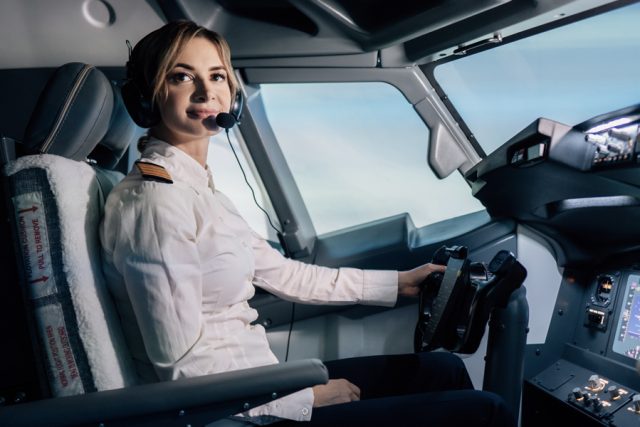Last month we celebrated International Women’s Day on March 8 and it gave us pause to think about how women have had a significant impact on aviation history. Often portrayed as a male-dominated field, behind the scenes and above the clouds, women have been making significant contributions to the development and advancement of aviation since its very inception. From early pioneers to modern-day astronauts, women have defied societal norms of their times and shattered glass ceilings in the business of flight.
Early Pioneers:
The story of women in aviation begins long before the modern era. One of the earliest pioneers was Katherine Wright, the sister of Orville and Wilbur Wright. Although not a pilot herself, Katherine played a crucial role in supporting her brothers’ aviation endeavors, managing their business affairs, and advocating for their work.
In 1903, on the same day that her brothers achieved the first powered, controlled flight, another trailblazer was making history. In France, Raymonde de Laroche became the first woman to earn a pilot’s license, paving the way for future generations of female aviators.
Amelia Earhart:
No discussion about women in aviation history would be complete without mentioning Amelia Earhart. Earhart captured the world’s imagination with her daring flights and ambitious pursuits, and in 1932, she became the first woman to fly solo across the Atlantic Ocean, a feat that galvanized her place in aviation history. Earhart’s disappearance during her 1937 attempt to circumnavigate the globe remains one of aviation’s greatest mysteries, but her legacy as a fearless aviatrix endures.
World War II:
World War II marked a turning point for women in aviation. With men deployed overseas, women stepped in to fill essential roles in aviation manufacturing, maintenance, and piloting. The Women Airforce Service Pilots (WASP) program in the United States recruited over 1,000 women to ferry aircraft, tow targets for live artillery practice (Yes, live artillery), and perform other non-combat flight duties.
Breaking Barriers:
In the post-war era, women continued to push boundaries and break barriers in aviation. Jacqueline Cochran, a pioneering aviator and businesswoman, shattered numerous speed and altitude records and became the first woman to break the sound barrier in 1953. In 1963, Soviet cosmonaut Valentina Tereshkova made history as the first woman to travel into space aboard Vostok 6, inspiring generations of future female astronauts.
Modern-Day Trailblazers:
Today, women continue to make significant strides in aviation. From commercial pilots and aerospace engineers to astronauts and air traffic controllers, women are represented in every facet of the industry. In 1999, Eileen Collins became the first female Space Shuttle commander, leading the STS-93 mission aboard the Space Shuttle Columbia. In 2020, NASA astronauts Christina Koch and Jessica Meir conducted the first all-female spacewalk, a historic milestone in space exploration.
Despite facing discrimination and adversity, women have made indelible marks on the world of flight from the earliest days of aviation. As journalist Rachel Ingram observed last month in Forbes, more and more women hold significant roles in private aviation from captains and pilots to C-Suite executives and business leaders (like Avionco’s own CFO, Verna Lidstone!).
